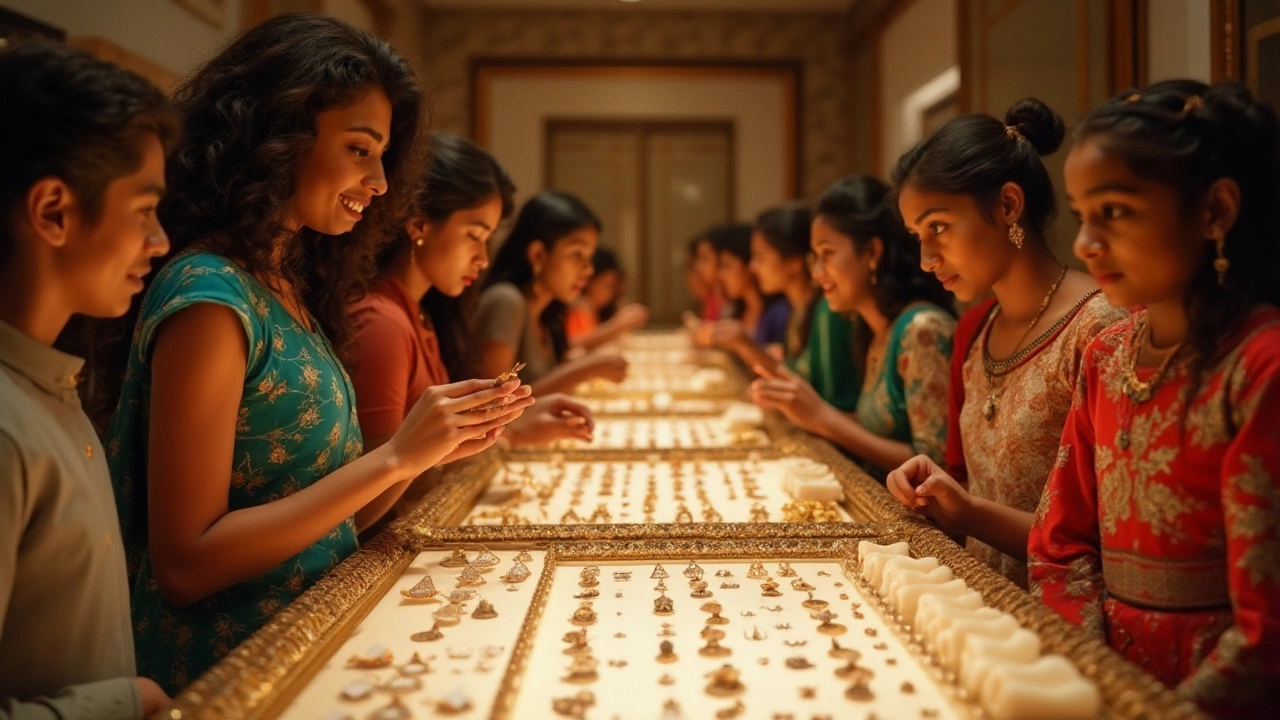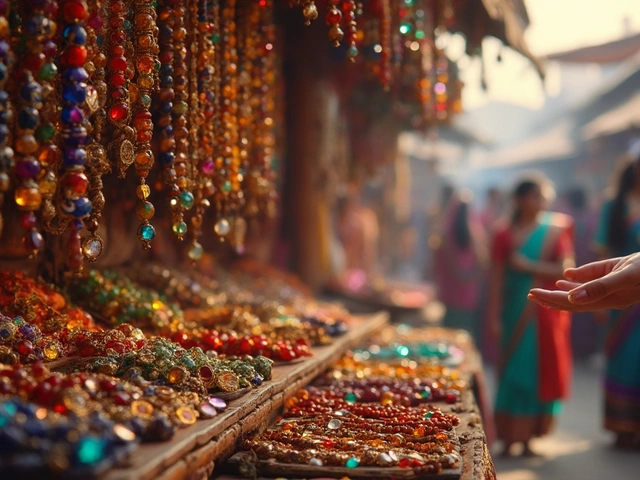Nose pins, once considered a symbol of tradition, have gracefully stepped into the realm of contemporary fashion, weaving a story of beauty and cultural significance. Whether you’re drawn to them due to personal beliefs, historical intrigue, or simply their aesthetic appeal, nose pins hold the power to transform not just one's appearance but also the way they feel about themselves.
The world of nose pins is as diverse as it is captivating, offering a range of designs that cater to every style—from elegant minimalism to bold statements. As these tiny, charming accessories continue to capture the imaginations and hearts of many, they raise an important question: is wearing a nose pin the right choice for you? Let's delve deeper into this fascinating topic and uncover the considerations you should keep in mind.
- Historical Significance
- Modern Style Evolution
- Health and Comfort Considerations
- Finding the Right Design
- Care and Maintenance
- Making the Decision
Historical Significance
The nose pin, a timeless piece of adornment, carries with it a rich tapestry interwoven with cultural, traditional, and sometimes spiritual meanings. This petite piece of jewelry dates back over 4,000 years to the Middle East, yet it finds its most vivid cultural expression on the Indian subcontinent. Nose piercings were mentioned in the ancient Vedas, proposing that they were more than mere decoration but bore spiritual and health implications as well. It's believed that piercing the left nostril was beneficial for easing childbirth and menstruation, tapping into the deeper understanding of Ayurveda, an ancient Indian system of medicine.
The tradition journeyed across cultures, as Alexander the Great's conquests spread the practice to ancient Greece, where the nose pin began to take on varying interpretations. In some old Persian cultures, nose pins were adorned by brides at weddings, symbolizing purity and fertility. This custom traveled through Silk Route traders to Africa, where it signifies social standing and wealth. The Berber and Beja tribes encapsulate this through their ornate jewelry, with the size of the nose pin indicating the family's wealth—larger pins meant greater prosperity.
"Jewelry, particularly nose pins, act as social markers and emotional registers, worn ritualistically, celebrating life's journeys," shares Dr. Ayesha Pant, a noted cultural anthropologist, highlighting the intimate connection between personal identity and jewelry.
Yet, it wasn’t until the 20th century that nose piercing caught the eye of Western subcultures, first as an exotic artifact of travel and later as a symbol of rebellion against the norm. Beatniks, hippies, and punk rockers picked up the trend in the '60s and '70s as an expression of defiance and individuality. By the 1980s, increasingly popular music bands and emerging youth cultures made nose piercings synonymous with a rebellious verve. Today's protagonists of fashion and personal style continue this journey, adopting the nose pin not just as an embellishment but as a statement, a way to rewrite one's history with each adornment choice.
Modern Style Evolution
In recent years, the journey of the nose pin from a traditional symbol to a chic fashion accessory is nothing short of revolutionary. Many credit this transformation to the global melting pot of cultures, where fashion continually draws inspiration from diverse traditions. Designers across the world have embraced this evolution, introducing unique designs that resonate with a younger, fashion-forward audience. The modern-day nose pin is often seen gracing the playlists of fashion shows, red carpets, and social media feeds, capturing the attention of influencers and trendsetters alike.
One of the most exciting changes in the realm of nose pin designs is the incorporation of various materials beyond the classic gold and silver. Contemporary designs often feature bold accents using pearls, gemstones, and even eco-friendly materials. Minimalist nose pins are also on the rise, catering to those who prefer subtle elegance over more elaborate creations. Such variety ensures that there is a nose pin for every style preference and occasion, from daily wear to special events.
In countries like India and Nepal, the practice of nose piercing and wearing a nose pin is steeped in cultural and historical roots, often signifying marital status or community belonging. However, modern adaptations have taken this rooted cultural expression globally. Brands like Claire's and Forever 21 have commercialized these pieces, allowing them to become accessible among wider audiences, offering everything from affordable options to high-end, bespoke pieces for the discerning customer.
Digital platforms like Etsy and Instagram have also played a significant role in the evolution of nose pins. Artisans and independent jewelers offer handcrafted designs, reaching customers who favor unique, one-of-a-kind pieces. Interestingly, a survey conducted by Fashion Institute of Technology in 2023 indicated that nearly 60% of those aged between 18 and 30 considered nose jewelry as expressing individuality and modernity. This growing trend reflects an essential shift toward personalized fashion, where consumers are keen to express their distinct identities through accessories.
"Nose pins symbolize a fusion of cultural heritage and individualistic expression, attracting a wide-ranging audience from various corners of the world," notes Sophia Chan, a renowned fashion historian, explaining the surge in global popularity. As individuals seek to distinguish themselves in an ever-connected world, the nose pin serves as both a personal signature and a nod to shared cultural histories.
The modern nose pin isn't merely an ornament; it's becoming part of creative storytelling in fashion. New-age media often tie these accessories to broader social narratives, discussing topics such as gender fluidity and empowerment. Reflecting on their versatility, it's clear why nose pins are fast becoming staples in the fashion arsenal of the bold and expressive.

Health and Comfort Considerations
When contemplating wearing a nose pin, it's vital to think about your health and comfort. Nose piercings, like any body modification, can come with a set of considerations that shouldn't be taken lightly. The very first step is to understand your skin type. Some people have sensitive skin that might react adversely to certain metals. Hypoallergenic options like surgical-grade stainless steel, titanium, or 14-karat gold are often recommended for those with sensitive skin. Each metal's properties vary, and a mismatch could lead to skin irritation or prolonged healing periods.
Another aspect to explore is the piercing process itself, which is an essential consideration for both health and comfort. Going to a reputable and experienced piercer ensures that the procedure is hygienic, using sterilized equipment, reducing the risk of infections. According to dermatologists, proper aftercare is just as critical as the piercing process. Keeping the pierced area clean and following aftercare instructions to the letter can make all the difference in healing without complications. Regular cleaning with saline solution, avoiding unnecessary touching, and resisting the temptation to change the jewelry too soon can help promote a smooth healing process.
The Healing Journey
The healing period can be longer for nose piercings compared to other types, often taking 6 months or more for complete healing. During this time, it's important to note any signs of infection, like prolonged redness or puss. Should these symptoms appear, consult a healthcare professional for advice and treatment. This caution helps prevent potentially more serious skin issues that could arise from untreated infections. Juggling aesthetic desires with health considerations requires a balanced approach, so don't rush the decision or compromise on the quality of the piercing.Comfort also plays an equally important role after the initial phases of piercing and healing. Wearing a nose pin can feel strange at first but should not be painful or unsettling. Choosing the right size and style that suits your lifestyle is paramount. For instance, if you play sports or engage in activities where the nose pin could be dislodged or snag on something, consider the style and fit carefully. Opting for a snug and secure fit prevents discomfort and potential accidents.
Amy Altman, a well-respected jeweler, states, "Comfort and safety should never be overlooked when choosing body jewelry. Always prioritize materials that suit your personal skin needs and lifestyle."Getting accustomed to a nose pin can take some time and patience. Listening to your body's signals and ensuring you are comfortable and pain-free is crucial in making this fashionable accessory a delightful experience instead of a painful ordeal.
Finding the Right Design
When it comes to selecting the perfect nose pin, every decision contributes to crafting a unique fashion statement that intertwines personal style with cultural significance. The world of nose jewelry offers a stunning array of choices, each piece reflecting different tastes and preferences. Whether you prefer a timeless classic look or wish to embrace a trendsetting modern vibe, your chosen design will speak volumes about your personality.
Consider the size and shape of your face when choosing a nose pin. For those with delicate facial features, petite designs with subtle embellishments can provide an elegant sophistication without overpowering one’s natural beauty. Alternately, bold and intricate patterns may suit individuals with more pronounced facial features, bringing balance and harmony to their contours. Innovations in jewelry design mean you can find options crafted from various materials, such as gold, silver, and platinum, each offering unique benefits in terms of hue, shine, and durability.
Understanding Materials and Gems
Nose pins are more than just the sum of their design—they are an amalgam of material and artistry that defines a definitive part of your style. Precious metals like gold and platinum are a popular choice for nose piercing, thanks to their hypoallergenic properties and timeless elegance. Silver, while alluring, may cause irritation in some wearers, and it’s wise to pair it with a suitable finish if it doesn't suit your skin. Speaking of gems, pearls bring a touch of softness and sophistication, whereas diamonds are chosen for their sparkle and durability. Colored gemstones like emeralds, rubies, and sapphires can add unique personality to a piece, allowing you to tailor your nose pin to complement your wardrobe or mood.
Design Types: The Choices Are Endless
The diversity in nose pin designs ensures everyone can find something predestined for them. The quintessential stud is simple yet classic, a go-to for those who love understated elegance. For those who lean towards a bohemian or ethnic flair, jhumkis—delightfully complex, bell-shaped danglers—might be the perfect choice. Hoops present an alternative sought by people wanting to bridge modernity with ethnic sensibilities. Innovations like magnetic pins provide a non-committal option for those hesitant about getting an actual piercing.
"The right piece of jewelry can transform the look and feel of the wearer, turning a moment into an opportunity for personal expression and empowerment," said renowned jewelry designer Ruven Pichonjal in his acclaimed publication.
Color also plays a part in this vibrant tapestry of design. While gold lends a traditional and auspicious tone, the chic edginess of darker hues, through gemstones or oxidation, can capture the modern spirit effortlessly. Seek designs with versatile elements that easily transition from day to night while being purposeful about their impact on fashion and personal preferences. By investing time to understand these elements, finding a nose pin that resonates with your inner self becomes an intuitive, rewarding journey.
| Material | Pros | Cons |
|---|---|---|
| Gold | Hypoallergenic, Timeless | Expensive |
| Silver | Affordable, Stylish | Possible Allergies |
| Platinum | Durable, Hypoallergenic | Very Expensive |

Care and Maintenance
Embracing a nose pin as a part of your daily accessory routine requires a thoughtful approach to care and maintenance to ensure that it remains as dazzling as the day you got it. A little bit of care goes a long way in maintaining not only the luster of the metal but also the health of the pierced skin around it. The key is to understand the type of material your nose pin is made from - be it gold, silver, titanium, or another metal, each has distinctive care requirements.
Cleaning your nose pin regularly is essential, and it all begins with a gentle touch. Experts often recommend using a mild, fragrance-free soap along with warm water. Carefully lather the soap in your hands, and then delicately clean the nose pin and the surrounding area. Rinse thoroughly to remove any soap residue, as leaving it can irritate the piercing. It's best to pat the area dry using a soft, clean towel rather than rubbing to prevent unnecessary friction that could lead to discomfort or even infection.
Precautionary measures should extend to your choice of clothing as well. Clothing with loose threads or gently flowing fabrics can catch onto the pin, pulling it sharply and causing pain or damage to the piercing. Being conscious of your movements, especially when dressing or undressing, can prevent accidental tugs and ensure your jewelry stays secure. Additionally, wearing a small bandage over the nose pin at night can provide an extra layer of protection against nighttime snags.
Sometimes, despite the best intentions and precautions, irritation or infection can rear its head. In such instances, being quick to respond is vital. A saltwater soak can serve as a soothing remedy; simply dissolve a quarter teaspoon of salt in a cup of warm water and use this to cleanse the affected area twice a day. Avoid using alcohol or peroxide since they can dry out the skin and worsen irritation. Should symptoms persist, seeking professional medical advice is advisable.
"Proper care of piercings is a testament to one's dedication not only to personal health but to cultural aesthetics," says Mary Beth Janssen, a renowned expert in holistic beauty.
Finally, rotating your collection can help reduce wear and tear on any one piece, and it keeps your look fresh and inspiring. While doing this, ensure that your hands are meticulously clean to avoid introducing any germs directly to the skin. Even though it's a small piece of jewelry, your nose pin is much more than an ornamental accessory. It deserves mindful maintenance to continue reflecting your personal style and distinction.
Making the Decision
Choosing to get a nose pin isn't something you should rush into. Primarily, it is a personal decision that reflects not only your style but also your comfort with changes to your physical appearance. Let's start with your personal reason for considering a nose piercing. Are you inspired by its cultural roots, or is it purely an aesthetic desire? Knowing your motives will guide you in making an informed choice. It's essential to analyze the commitment level required. Unlike temporary fashion accessories, a nose pin involves a more long-term interaction with your body that needs care and hygiene.
Another vital aspect to think about is your environment. Consider how your workplace or school views visible piercings. While society has become more accepting of personal expression in recent years, certain traditional environments might still hold conservative views. Speaking to employers or teachers in advance could prevent future conflict. Equally important is understanding your body’s unique healing process. Often, people overlook the fact that everyone's skin heals differently, which can affect both the placement and the retention of the piercing. Consulting with a dermatologist or a professional piercer can provide insights into what your experience might be like.
Your choice should also take into account the vast array of styles and materials available. From stainless steel to gold and diamond-studded designs, you can find a nose pin that suits any occasion or budget. However, if you're sensitive or allergic to certain materials, it's crucial to choose hypoallergenic options. This brings us to an important financial aspect—be prepared for the cost of switching out your nose pin for different events or purposes. Fashion trends change, and what you might have loved at first could feel outdated down the line.
Moreover, there's a psychological angle in deciding to adopt a fashion trend like nose pins. It’s often said that decisions around body modifications can enhance confidence, serving as a bold statement of self-expression. A report by the Baylor College of Medicine indicated that people with body piercings often reported higher self-esteem compared to those without such modifications. However, it should equally be noted that such changes carry a permanence and might not suit everyone.
"Fashion should be a form of escapism, and not a form of imprisonment." – Alexander McQueen
This quote can resonate with those on the fence, encouraging them to see a nose pin as merely an accessory of choice, not a constraint. Finally, consult with friends who have experience in wearing jewelry design like nose pins. They've been through the process and can provide honest insights. Weigh their experiences and advice carefully which can highly influence whether this step is the right one for you.



